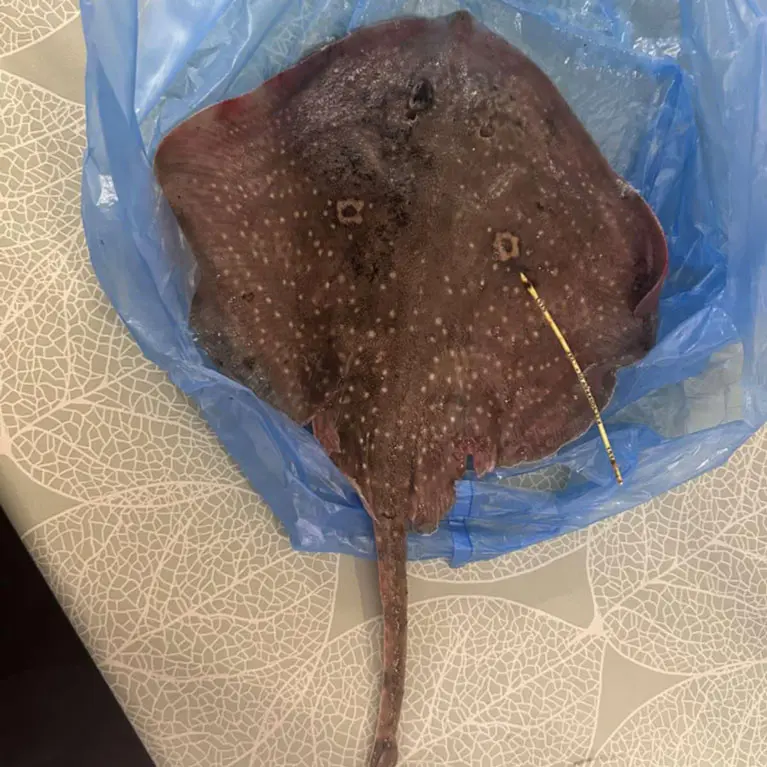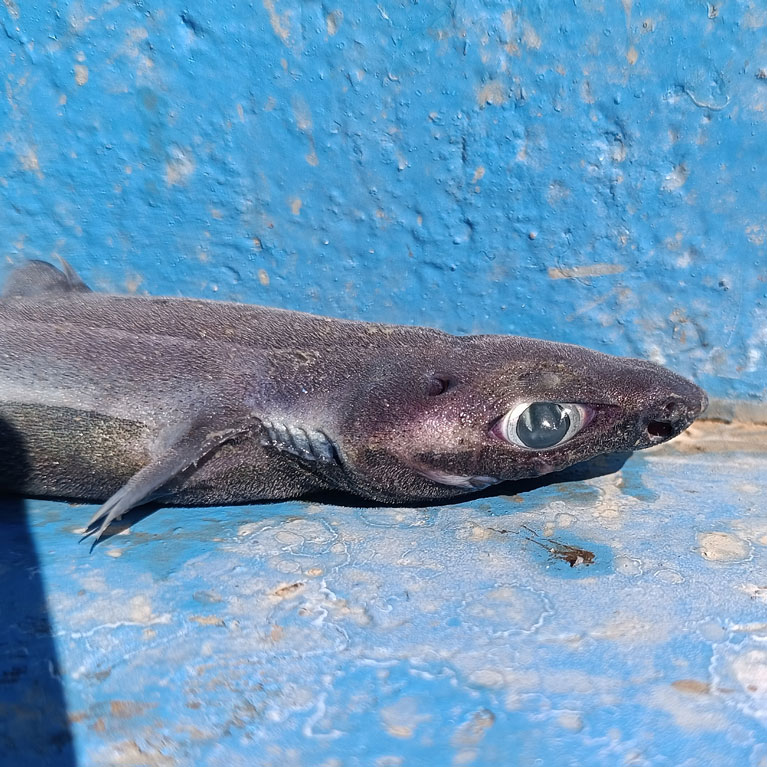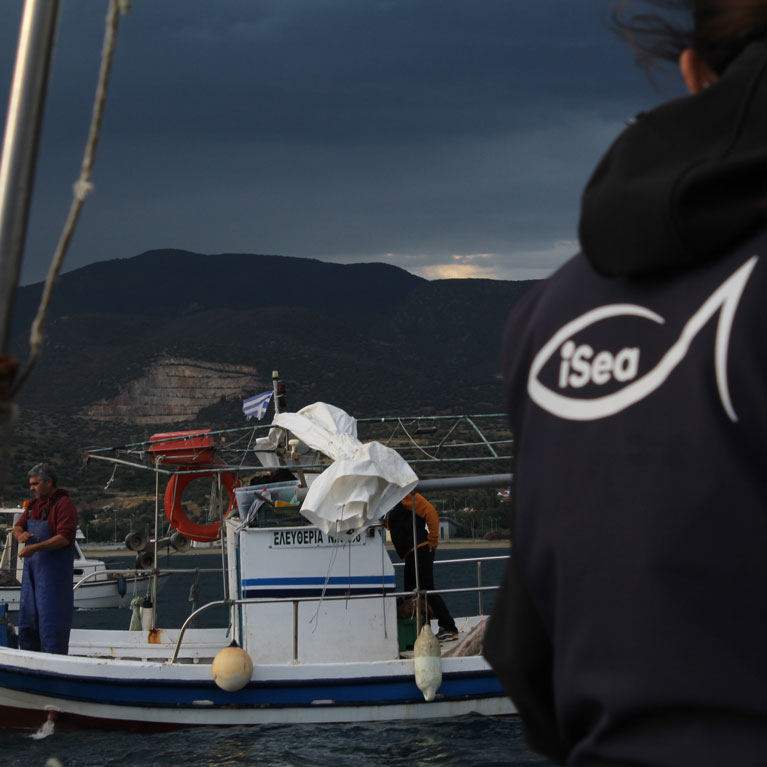Setting the baseline: gathering data on rough skates in the Thracian Sea
Endemic (found nowhere else in the world) and Endangered, the rough skate is a conservation priority in Greece’s Thracian Sea. Although the Thracian Sea Shelf has been identified as an Important Shark and Ray Area (ISRA) by the IUCN, confirmation of nursery grounds or breeding sites still needs to be recorded. Roxani is hoping to do just this, while defining reproductive aggregations of this species. She will also be investigating the impact of trammel nets and bottom trawls used by local fisheries on this species, and using the baseline data collected to help guide management plans that can mitigate bycatch in the Thracian Sea.
In my earliest memories I used to snorkel, searching for small cavities and caves in rocky shores where sponges and octopus might lurk and turning over small rocks in the hope of seeing brittle stars and hermit crabs on the move. To this day, I have a recurring peaceful dream in which I’m swimming in calm waters that are full of colourful sea stars and sea urchins and, in my sleep, I watch them for hours. I grew up loving nature and drawing and wanted to be a naturalist observing and describing ‘new species’. I eventually came to...



Protecting the Endangered Rough Skate Raja radula in the Thracean Sea
To increase knowledge regarding the endemic and Endangered rough skate in the Thracian Sea, Greece, with the aim of improving its conservation.
The Thracian Sea Shelf was designated an Important Shark and Ray Area (ISRA) for the rough skate, a range-restricted species that also breeds in the area. iSea has worked in the region for two consecutive years, but pupping and nursery grounds have yet to be confirmed. This project aims to identify where and when the rough skate uses parts of the Thracian Sea and to assess the impact of local fisheries on its population.
The rough skate Raja radula is among the few elasmobranch species that are considered endemic in the Mediterranean Sea. Although it is listed as Endangered, only sporadic studies have been made on its ecology and biology, mostly in the western and central Mediterranean. In the Aegean Sea, however, it has been shown that this species and the thornback skate R. clavata are among the most common elasmobranchs. Although the rough skate is not targeted by fishers, it is valued if caught incidentally. In fact, it comprised 9.6% of the total elasmobranch catches from all gears combined and was the elasmobranch most often taken in nets. In 2019 and 2020, newly hatched and neonates were recorded in small-scale fisheries in the Thracian Sea, along with gravid and post-natal females in fisheries in shallow waters, while mature mixed-sex aggregations were recorded in deeper waters where bottom trawls were operating. These observations suggest that the area is important to the rough skate for breeding and could serve as a pupping ground and nursery. According to the latest assessment of its population, the species has experienced an estimated decline of 58% for the periods 1995–2000 and 2003–2006, an inferred decline of 79% for 2007–2015, and a projected decline of 89% for the period 2016–2023 in the Aegean Sea. These dramatic declines show the urgent need to conserve this endemic species and therefore the need to increase knowledge about its ecology and biology throughout its range. This project aims to understand the rough skate’s use of the area in relation to its life cycle and the impact of local fisheries on its population. The results of the project will help to inform future management and conservation.
- To confirm and define the reproductive aggregation and nursery areas used by rough skates in the Thracian Sea.
- To assess the impact of local fisheries on the species’ population, focusing on trammel nets and bottom trawls, which have the highest bycatch.
- To set the baseline for informing customised management measures to reduce the impact of bycatch on the species.
Summary of main research results/outcomes
This project confirmed Kavala Bay as a nursery area for Raja radula, with juveniles recorded year-round in shallow waters (1.5–10 m) in consistency with previously collected data, meeting key nursery criteria despite the absence of neonates who most likely are absent in the sample due to gear selectivity. A short-term post-release mortality (StPRM) protocol applied to 56 individuals showed a 66% improvement in health condition after 40 minutes in recovery tanks, with no mortality observed. These findings highlight the effectiveness of proper handling and release as a low-cost, practical conservation strategy. Tagging campaign yielded at a recapture rate of almost 12%, reinforcing evidence of survival and possibly high residency (Neat et al., 2015). These results, supported by fisher collaboration, will be utilised to promote science based local management measures.

